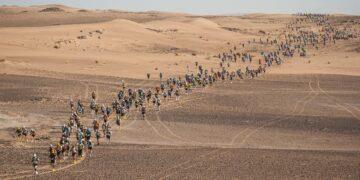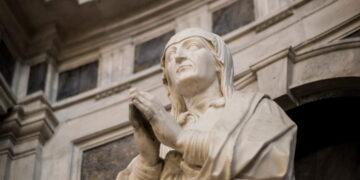Contents
Questo articolo è disponibile anche in:
Arabic script has a complex history. From the dawn of Islam to the modern era, it has undergone a long and irregular transformation that has made it one of the most elegant languages in the world.
The artistic manifestations born from Arabic calligraphy are innumerable: from the beautiful verses handwritten in the Koran to the mural squiggles that have filled the walls during the uprisings of the Arab Spring.
The Arab world boasts immense cultural and artistic richness, of which Arabic script is part. Its history is deeply and inevitably intertwined with religion. For Muslims, it is the language of divine revelation, and its “sacred” nature is the true reason behind the origin of Arabic calligraphic art.
From these premises some questions arise spontaneously: what changes has Arabic writing undergone over the centuries? What is its relationship with canons of beauty? And how was Arabic calligraphic art born? In the next paragraphs we will try to shed light on each of these points.
About Arabic script
Before starting to deal with about Arabic script, it is first necessary to know some of its main characteristics. Arabic is based on a consonant system, perhaps of Aramaic origin, made up of 28 graphemes. Therefore, its alphabet consists mainly of consonants, except for three vowels, which transcribe the sounds /ā/, /ī/, and /ū/. To these vowels are added three more, corresponding to /a/, /i/, and /u/, which are not always reported in the text, but, when present, are indicated by specific graphic signs.
Arabic script does not distinguish between uppercase and lowercase letters. It is, in fact, based on a cursive system made up of characters that intertwine with each other as if they formed part of a single thread that tangles and untangles. Each character is linked to the adjacent ones, except for six graphemes: alif, dal, dhal, ra’, zay and waw.
Actually, to write in Arabic, it is not necessary to remove the pen from the paper; its tip rises only after the aforementioned letters (because they do not connect to the following ones), or when adding the dot (or dots), called “diacritics” in technical jargon, above, below or at the center of some graphemes.
This peculiarity of Arabic derives from slight variations in the shape of its graphemes, which change according to their position (initial, middle or final) in the words. Last but not least: Arabic writing is drawn and read from right to left, unlike Western languages.
The bond with the sacred
The flourishing of Arabic script is marked by the death of Muhammad, the last Prophet of Islam, in 632 AD. His disappearance made it urgent to fix the message of the divine revelation, which, otherwise, would have been subject to dangerous alterations in oral transmissions. Writing became the means through which to preserve the word of Allah, a sacred verb revealed and transmitted in Arabic.
As a direct and absolute expression of the language of God, it was, and is, felt as a beautiful entity. Arabic calligraphy is seen, to quote the words of Campanini, a leading Italian expert on Arab culture, as “the supreme and sublime art of Islam”.

Since the Koran is the divine verb, it is not only recited, but also beautifully decorated. The Islamic art most widespread and cherished by Muslims, not surprisingly, is linked to the embellishment of the sacred text of Islam. It derives from obsequious religious adoration. Over the centuries, in fact, Arabic script has undergone a progressive aesthetic evolution.
Reforms and graphic embellishment
The first writing styles had 17 letters, compared to the current 28 (29, if we also consider the hamza grapheme), and the texts were not vocalized. This entailed the risk of confusing some letters, now clearly distinguished thanks to the diacritical signs, and, consequently, of compromising the correct reading of the texts, especially the Koran.
Thus, script reforms that would resolve these ambiguities in reading became necessary. The first Arab conquests in the Umayyad era (661-750 AD) had led, in fact, to an incredible expansion of Islam from Egypt to India. The large number of new converts, many of whom were non-Arabic speakers, became the driving force behind this reformative intent, in order to guarantee a correct recitation (qirā’a) of the message contained in the sacred text of Islam.
A perfect reading of the Koran required complex knowledge of Arabic grammar and language. This is why, between the 7th and 8th centuries, some innovations were eventually introduced by Abu Aswad al-Duali, Nasr ibn ‘Asim, Yahya ibn Yamur and al-Farahidi. Diacritics and short vowel signs appeared for the first time.
Aesthetic reforms followed the first ones. Some graphic styles of Arabic were canonized and made proportionate through mathematical measurements of the graphemes. Ibn Muqla, an Abbasid vizier of the 9th-10th century, was the inventor of an original system of script standardization (the naskhi style) for regularization needs in the technical and administrative fields.
Ibn al-Bawwab and Yaqut al-Musta’simi were the authors of embellishment reforms. These two calligraphers managed to soften the graphemic features and make them more elegant and graceful, elevating the Arabic script to a suitable vehicle for the transmission of the sacred message. It was transformed into a “dress” worthy of its content.
The art of master calligraphers
The graphic beauty of Arabic continues to be valued today. Among the master calligraphers who have given the world the most memorable works, we must mention: the Moroccan Ahmed Cherkaoui, the Tunisian Nja Mahdaoui, and the Iraqi Hassan Massoudy. Their merits also lies in having experimented with a new fusion between Western and Arab art.

Cherkaoui has created colorful works with deep symbolic meaning, while Nja Mahdaoui has been defined as the “choreographer of letters” for his ability to create imaginative calligraphic compositions with Arabic letters. Finally, Hassan Massoudy has been able to combine poetic beauty with graphic art through the use of delicate calligraphic styles.
Manifestations of Arabic calligraphic art, however, are not found, and should not be sought, only on canvas, but also in architecture, sculptures, and street art. Among the artists of the moment, it is worth mentioning El Seed (click here to read the article), author of splendid “calligraffiti”, i.e., artistic productions that blend calligraphic finesse and graffiti.

Thanks to its expressive power and aesthetic delicacy, Arabic calligraphy lends itself to multiple uses in the artistic field and exerts its fascination throughout the world.



















